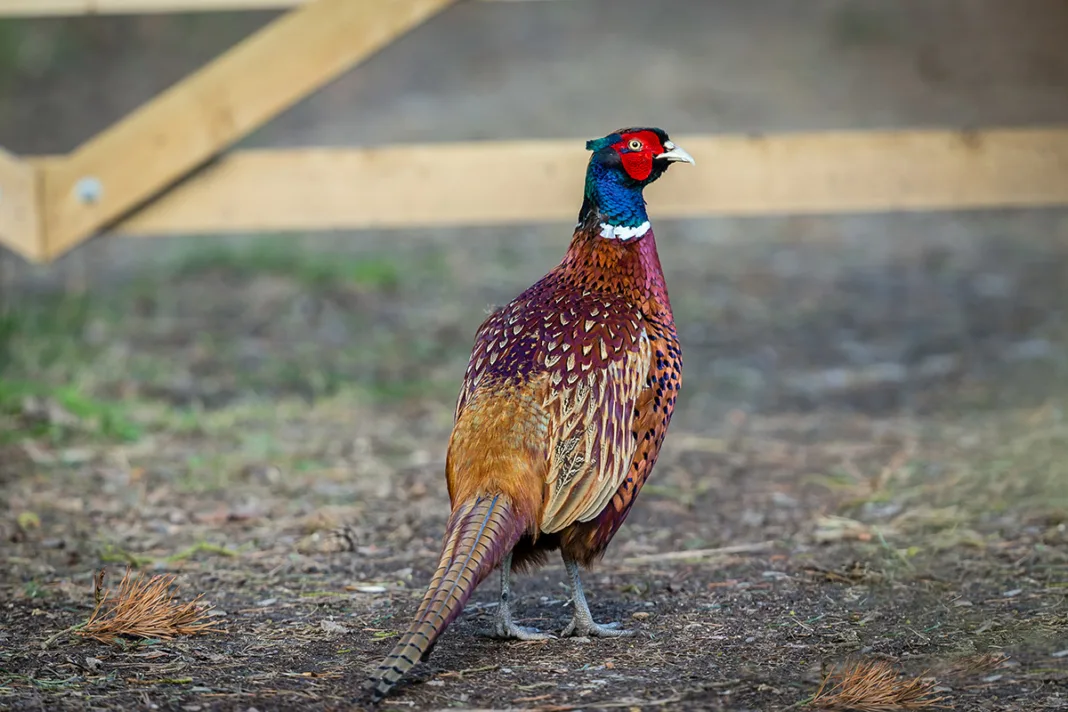Pheasant keeper Ian Clark explains what to look out for and how we can treat our birds to ensure that if they do pick up a parasite, it does not necessarily mean a death sentence
Analysis of more than 300 post-mortems on pheasant chicks in 2017 showed that 34 per cent, over a third, died from coccidiosis infections. A further 20 per cent (a fifth), died from hexamita. In other words, half of all pheasant chick deaths were caused by these two easily treatable conditions.
The speed with which these parasites can spread and multiply is frightening – a single coccidiosis organism can produce up to half-a-million eggs during its life cycle as it passes through the gut of a bird. The natural immune system of the birds can handle a certain level of them, but there are limits, beyond which illness and death will result.
In natural conditions, if a bird picks up a single parasite egg, it will be relatively unaffected and eventually the parasite will die off. However, the parasite will have produced those half-a-million eggs (oocytes) before it died and these oocytes will all have been excreted in the birds’ droppings. In the wild, a bird is free to roam and is unlikely to pick up any oocytes, as droppings will be widely scattered. In an aviary, however, those eggs are all still lying there and so the chances of a bird picking up one, or many, are hugely increased. In suitable conditions, the oocytes can lie dormant for weeks or months, and they can quickly build up in your birds to a serious level.
Anything that weakens birds’ immune systems can allow parasites to take over and stress of any kind does this. Overcrowding, the stress of being caught up to be closed-ringed, extreme weather, and even lack of drinking water for a period – all weaken immune systems.
Young chicks are particularly vulnerable, as their immune systems are not fully developed and their “good” gut bacteria will not yet be well established. It can be helpful to boost the good bacteria by giving chicks probiotics in their drinking water from day one. Put simply, this quickly increases the numbers of good bacteria and helps crowd out those that could be harmful. Chicks also benefit from the addition of electrolytes for the first week – again, this helps to boost their immune system and allows them to cope better with parasites and infections.
Neither coccidiosis nor hexamita needs to be fatal – both can be treated if caught in time. Neither are present in the chick when it hatches and they can only be picked up from contaminated food or water in the environment. It can be difficult to spot the early signs, especially in young chicks, but if you see one or more that seem to be falling behind the rest, either in growth or behaviour, visit your vet and get him/her to prescribe the correct treatment for you. Not all vets specialise in avian problems, so it could be useful to visit yours and have a chat about the problems you are likely to have to give him or her time to do some homework! In particular, watch out for blood in the droppings or yellow foam droppings – both indicators of a serious problem with these intestinal parasites. Speed of treatment is vital, as by the time you see those problems in the droppings, it will probably be too late to save the chick that made them. However, it may be possible to treat the rest of the batch in time.
Finally, remember that these parasites are widespread in the environment – up to one third of corvids carry them naturally, as do many other wild birds. It would be impossible, in practice, to prevent a bird from becoming infected at some stage in its life, as mice or sparrows (or even your feet!) could easily carry the oocytes into almost anywhere. It makes sense to worm your birds regularly, so that the build-up of parasites is always kept to a safe level, especially just before breeding and before the start of the moult – both times of natural stress.
Ian Clark specialises in pheasants, of which he currently keeps about 20 species, and (of course) has far too
many aviaries.
Find more news and articles like this on the Cage & Aviary Birds website. Subscribe to Cage & Aviary Birds magazine now.


